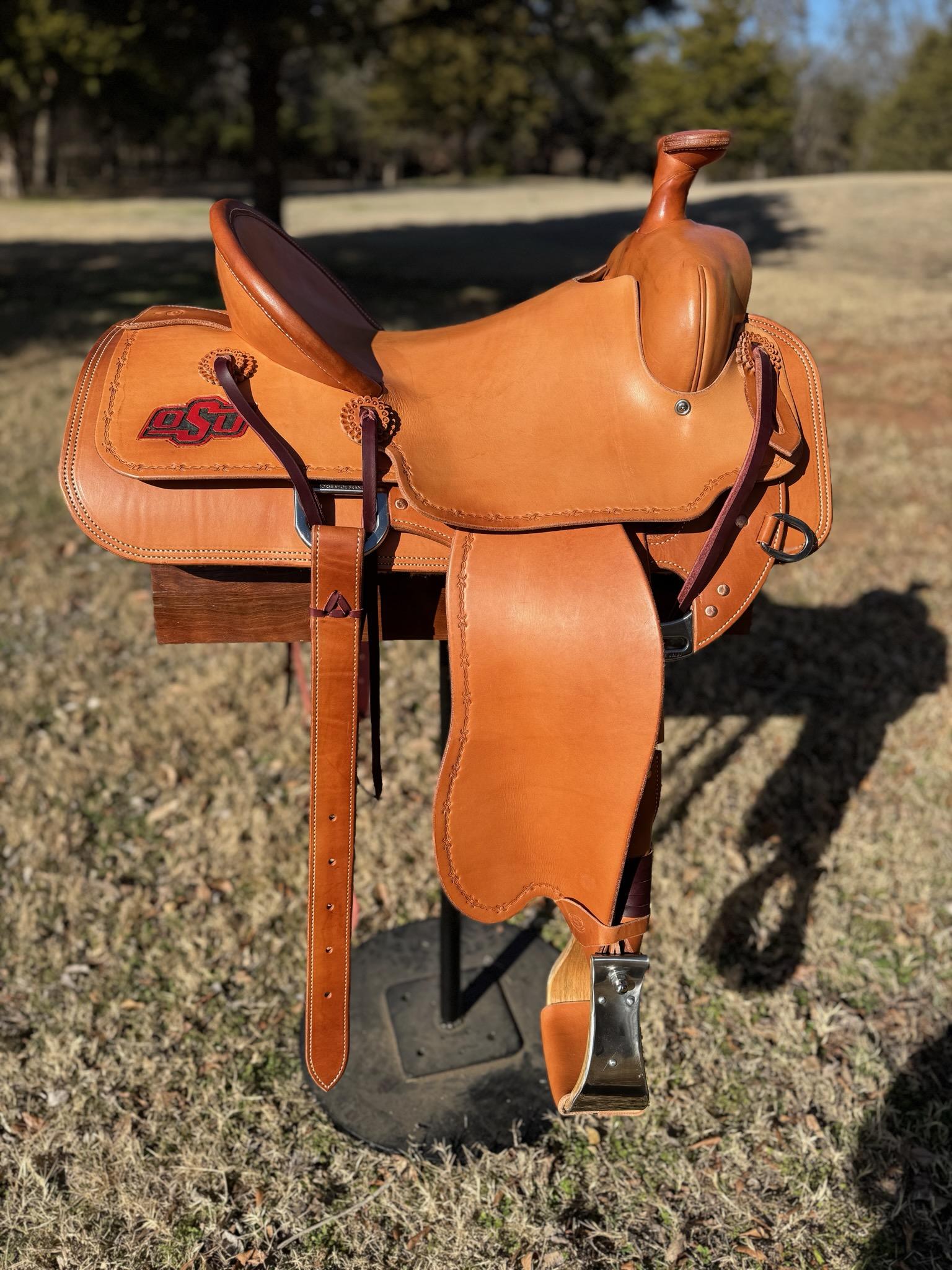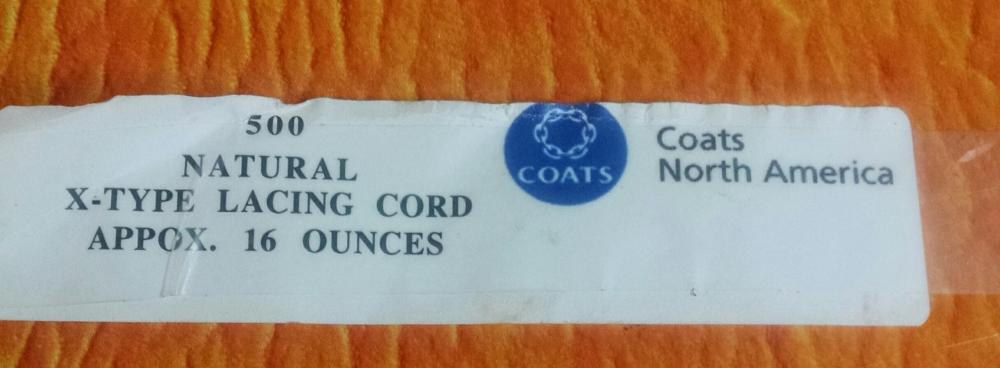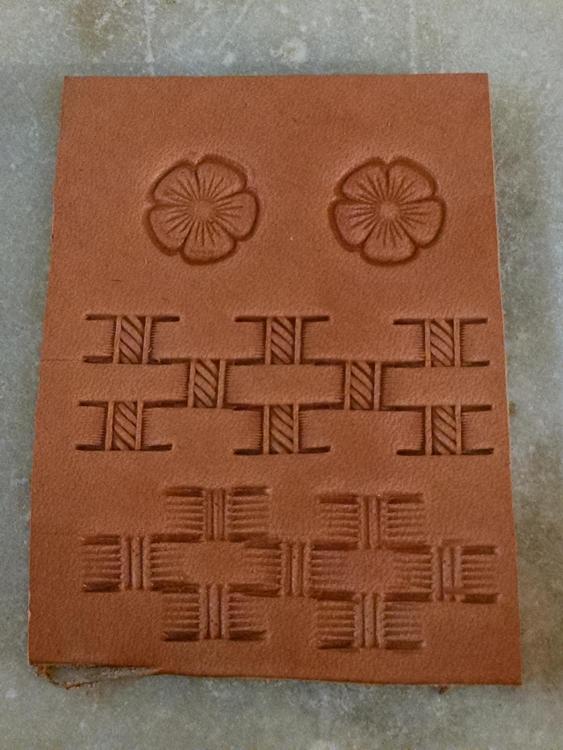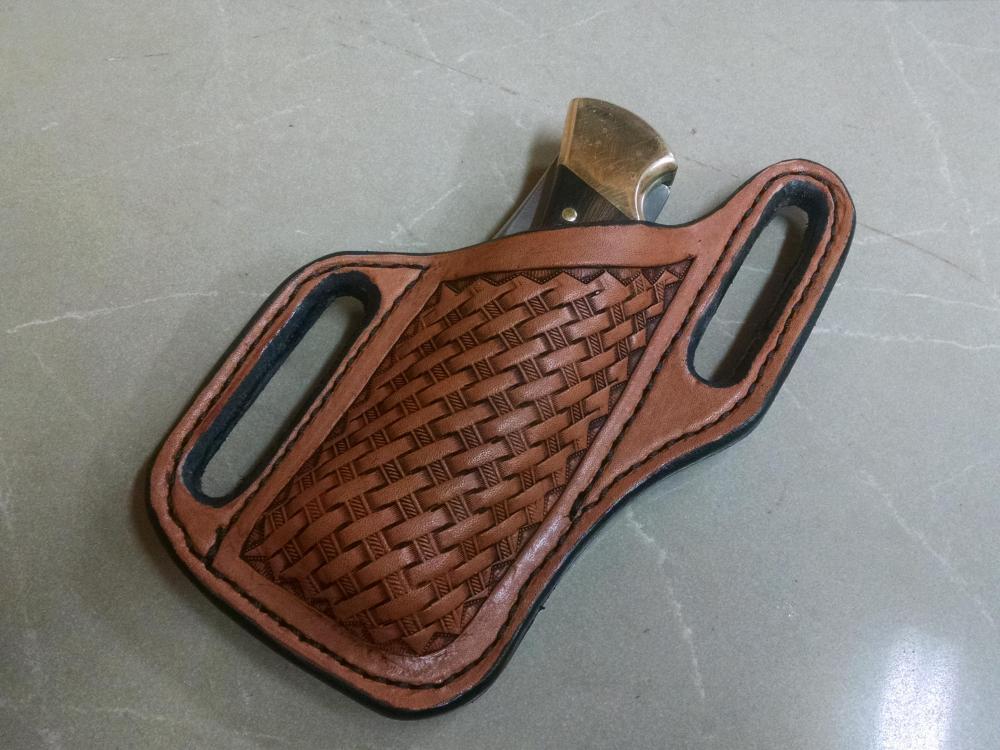-
Posts
486 -
Joined
-
Last visited
Content Type
Profiles
Forums
Events
Blogs
Gallery
Everything posted by rktaylor
-
-
I try to get a saddle out of two sides, but mistakes that I can't live with sometimes cost me. If you have your patterns before you start cutting, you can be more efficient. I pretty much stick to 13/15 Hermann Oak. I plug skirts just like Jeremiah Watt, leaving the space under the leg without plugs. I want to make sure the skirt corners have some stiffness. Good luck, Randy
-
Thanks to all. I'll do a couple test pieces as soon as I get a warm day. Randy
-
Thanks. I'm also curious about other methods of anyone wants to share. Randy
-
Thanks. What's your recipe and procedure for bees wax and olive oil? Randy
-
Thanks. I'll take the disclaimer into consideration. Randy
-
I am curious about how you oil a rough out saddle during construction since you don't want to oil the flesh side of the leather. The fenders are straight forward, but what about the seat and skirts? Do you give them a good oiling before gluing? I was thinking about oiling the skirts pretty good after they are blocked and before plugging. Then oil the seat pretty good before gluing it down. Thanks for your thoughts, Randy
-
As mentioned previously, the Panhandle folks are great to deal with. I've bought a lot (at least from my perspective) of leather from them. The HO they sell it's tannery run, so quality is variable. I've recently bought #1 HO from Goliger and Montana Leather. Both were easy to work with. I'm going to order a couple sides from Montana next week. Randy
-
Congrats. That's a nice looking saddle. Randy
-
I don't believe your thinking is completely flawed, but I'm not sure you're going to get a tree for the price you want. I don't know if you can buy an off the shelf mule tree. I suggest you check with Timberline and Quality Mfg. I used Quality trees on most of the saddles that I have made.I think they are currently $500 + shipping. I'm not sure about Timberline. I looked at them at the Prescott show last year and they looked really good. I'll certainly consider them for my next saddle. I would also consider how much bigger your mule will get and try to get the job done with one saddle. Just my 2 cents. Randy
-
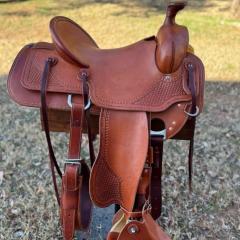
Split ear headstall and reins set
rktaylor replied to dfrensdorff's topic in Saddle and Tack Accessory Items
I really like that headstall. Clean and ready to use for a really long time. Randy -

Pancake style knife sheath
rktaylor replied to Rolandranch's topic in Gun Holsters, Rifle Slings and Knife Sheathes
Nice sheath and saddle. Your tooling is awesome. Good Luck at Prescott. I went last year and it was worth every penny and minute. The 1000 miles one way was a tough drive on an old man. Though it is 50 miles closer than Sheridan. Randy -
Ron and Ken, I have a lot of tools from Lonnie and Clay. All are high quality. Bruce, I appreciate the offer. I am probably a month away from needing it. I'll check with you when it gets closer. Randy
-
Thanks YinTx. I have the 532. It lacks the crisp imprint that I want. Ken, I found those stamps this morning. I've never used JW stamps. Is it fair to assume they are comparable to Barry King or Clay Miller? It looks like the best option for now. Randy
-
I've bought a lot of Hermann Oak from Panhandle Leather. It's tannery run so the quality is variable. I've bought #1 from Montana Leather and Goliger. I haven't used Wicket & Craig. Randy
-
I looked in Weaver's catalog and didn't see one. I'll check the web page. Here's the Tandy version along with a Tandy basket weave in the bottom. I would like one with the definition of the Clay Miller basket weave in the center. I didn't get the number before I came in the house. Thanks for the help, Randy
-
Dusty, I can't help on the rigging question, but I recommend you expand your educational materials. I started off with Dusty Johnson's book , patterns and video and found myself staring into space and scratching my head a lot. I didn't have the knowledge to 'fill in that blanks' like I needed. I expanded my library to include Jeremiah Watt's DVD, the Stohlman series (which you can now get in a single book), Harry Adams handbook, and John Hopper's book. Harry Adams book is my top 'go to' resource. Please post anything you learn specific to rigging for a mule saddle. I am interested in the topic. Randy
-
I am needing a Hamley Prairie Rose (five petal) stamp for an upcoming project. I know the McMillen stamps are coveted and hard to come by. I checked with several tool dealers with no success. Barry King is making a replica, but does not have an estimated completion date. I have a Tandy version, but it lacks the clarity and definition that I prefer. If anyone has one that they are willing to sell/loan/rent, please let me know. Also any tips on where I should look are appreciated. Randy
-
This is the only one I'm aware of, but it does tend to move a little slow at times Randy
-
I would suggest no more than 6 spi for your first effort. However, I wouldn't go wider than 5 spi. You're taking about a lot of sewing. I can't even imagine using chisels. A cantle binding will be more than a half inch thick. I use thread similar to Goldshot. Randy
-
The John Hopper book has a lot of tack/accessory items and Big Sioux is correct regarding the bronc halter. I like the book, but it certainly isn't my "go to" book on very many things. A lot of the items lack detailed instructions and the bronc halter in the book is no exception. The vague description might be fine for someone with experience, but leave a lot to be desired for a novice. Big Sioux's advice on heavier, wider, and larger is consistent with Hopper's book. His dimensions were based on a large horse halter. Randy
-

Shotgun Case Pattern
rktaylor replied to rktaylor's topic in Gun Holsters, Rifle Slings and Knife Sheathes
The Tandy pattern also has a full length zipper, but I like the bottom plug at the barrel end. Thanks, Randy -

Shotgun Case Pattern
rktaylor replied to rktaylor's topic in Gun Holsters, Rifle Slings and Knife Sheathes
Thanks. I must have missed that in my search. Randy. -
I am planning to build a shotgun case (or 2). I have the pattern pack from Springfield leather, but don't want the full length zipper. I have seen a few cases online that I like better, but no patterns. Am I stuck making my own pattern? Also, I would like to make a case for a bolt action rifle with scope. I have seen plans for scabbards, but not cases. Can I leave the bolt in place inside the case or should it be removed? I am a gun novice. Thanks for any tips. Randy


